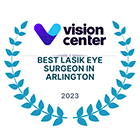Cataract surgery is an extremely safe procedure that allows those afflicted with cataracts to have them removed, giving patients the opportunity to see clearly once again. The procedure can be performed in multiple ways, either as traditional cataract surgery, or laser-assisted cataract surgery.
Laser-assisted cataract surgery differs from traditional cataract surgery because it involves the use of a femtosecond laser to remove the cataract. Traditional cataract surgery is performed with a hand-held blade, usually made from either a high-quality metal or diamond. After the incision is made, the surgeon then breaks up the cataract into small pieces, and removes it from the eye.
The eye is thoroughly mapped and measured to ensure that the surgery is executed as accurately as possible. The map and measurements are used during the laser-assisted cataract surgery, ensuring the path of the laser is unique to the eye and specific measurements taken, and making the procedure highly accurate. When undergoing laser-assisted cataract surgery, patients only receive the most individualized care, since the mapping and 3-D measurements are completely unique to the patient.
Unlike traditional cataract surgery, laser-assisted cataract surgery is completely bladeless, which lowers the risk of infection or other complications. Compared to traditional cataract surgery, laser-assisted cataract surgery is considered a minimally invasive procedure. The laser used is guided by a computer, making it a quick and effective way to remove cataracts. The laser breaks up the cataract quickly, and is then removed from the eye. After the cataract has been removed, the surgeon will implant an IOL (Intraocular lens).
Although laser-assisted cataract surgery is minimally invasive, there is healing that needs to occur after the procedure. Most patients who undergo laser-assisted cataract surgery find that they have clearer vision just one day after surgery. Common side-effects after the procedure include itchy eyes, sensitivity to lights or touch, and fluid discharge. You may receive anti-inflammatory eye drops, which help to speed up the recovery process, and can help protect your eyes from infection. After a few days, any lingering symptoms or side effects should clear, leaving you able to go back to your normal, day to day activities.
If you or a loved one have cataracts, and are looking for a minimally invasive procedure to remove them, please contact our team here at Silk Vision & Surgical Center to schedule a consultation.











.png)
